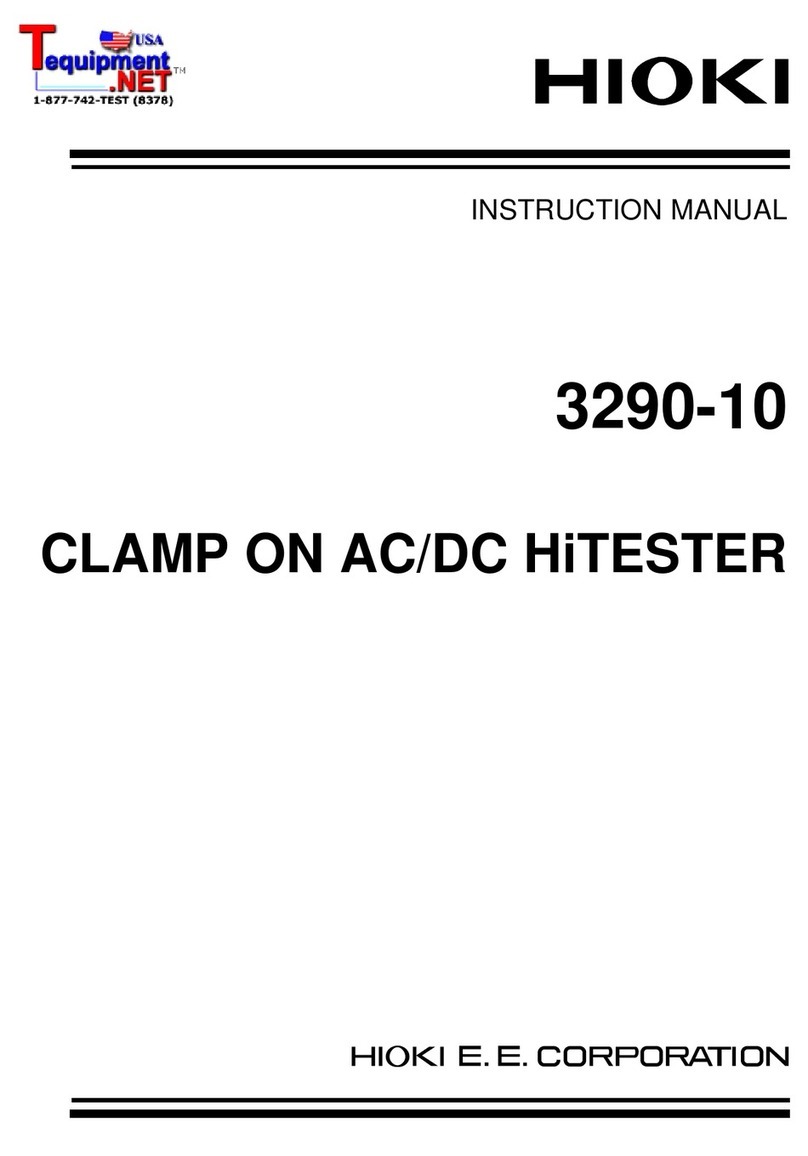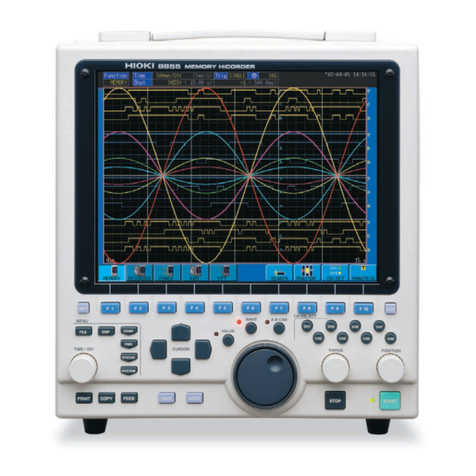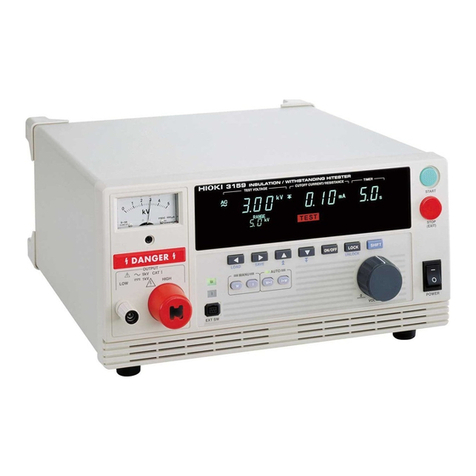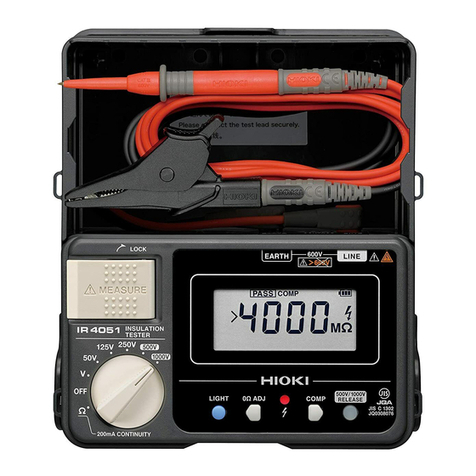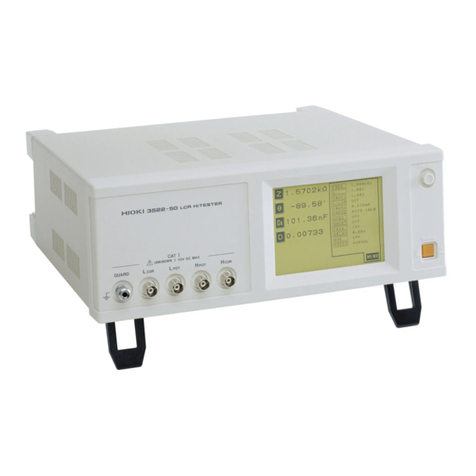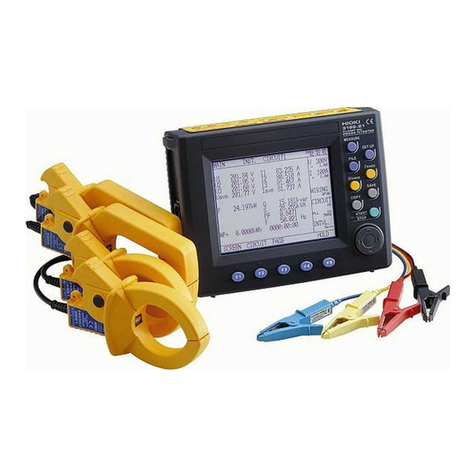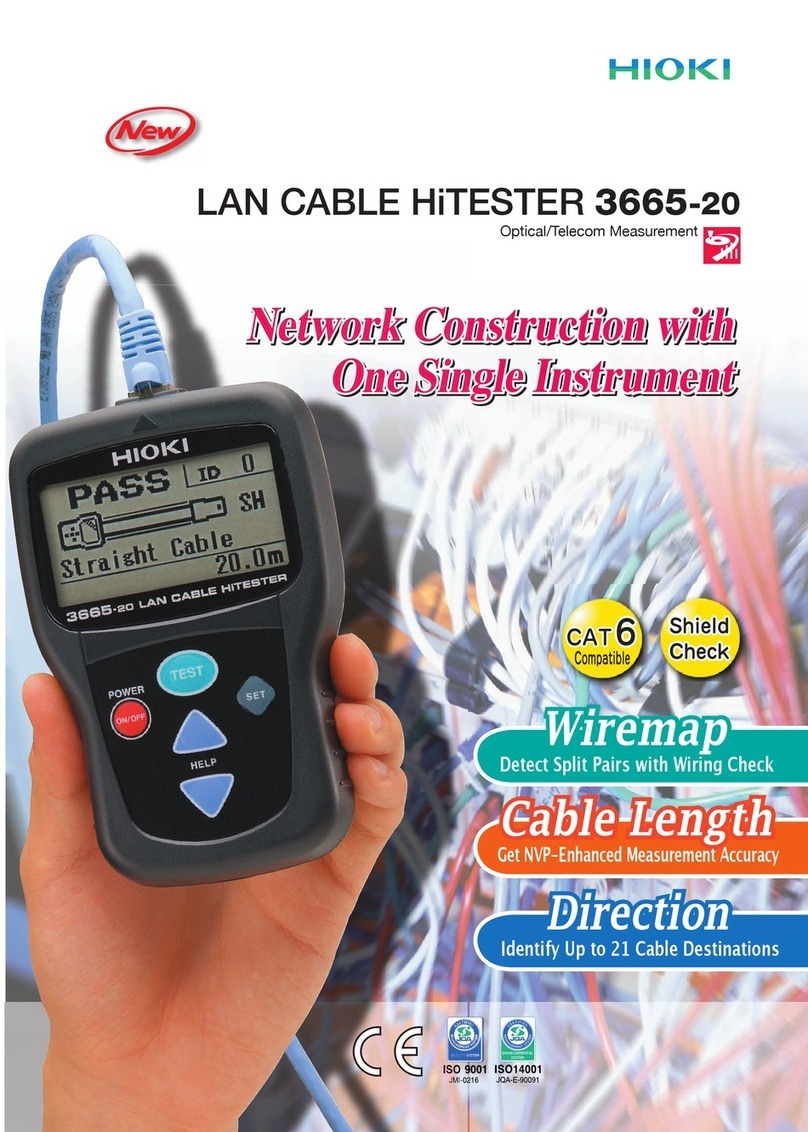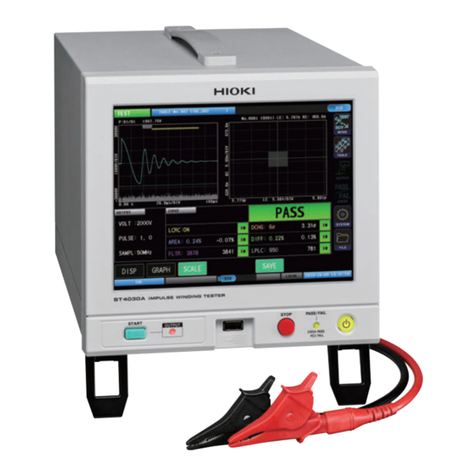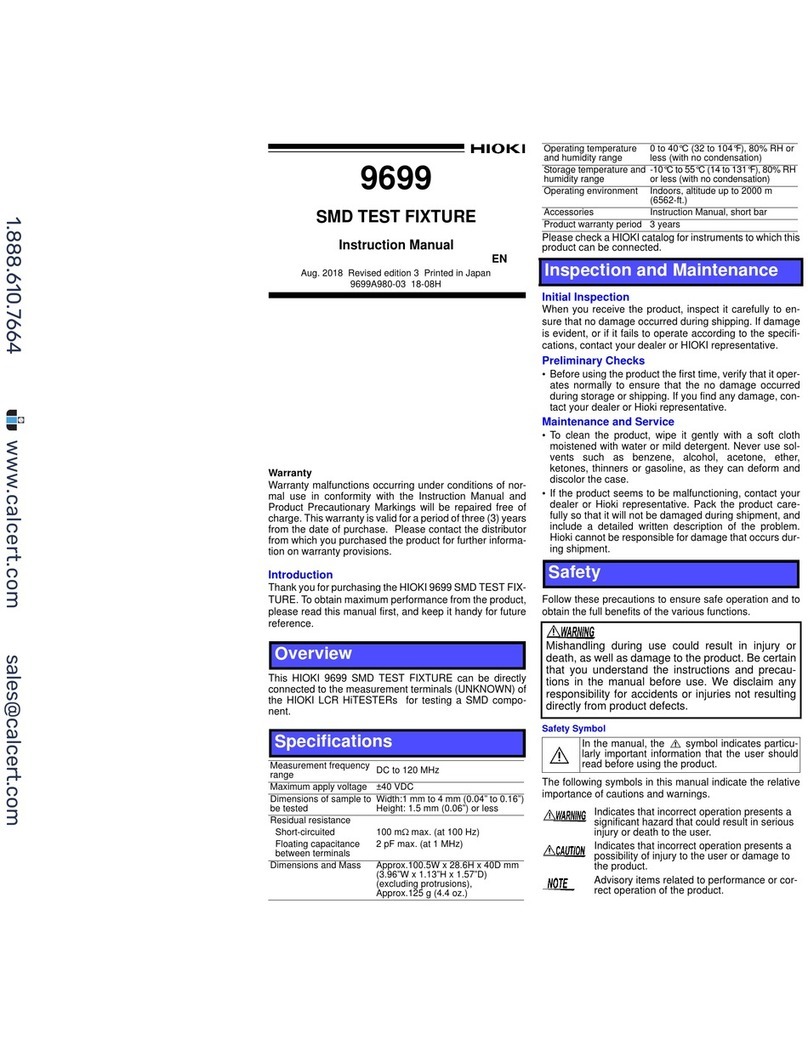
iv
────────────────────────────────────────────────────
Introduction
────────────────────────────────────────────────────
DANGER To avoid any life-threatening electric shock accidents, ensure that the
following rules are observed.
・The AC Withstanding Voltage Hitester is a dangerous product which
discharges high voltages. To prevent getting electrocuted, always
wear high-voltage protective rubber gloves when carrying out any
operation.
・Be careful when using the product and ensure that you do not touch
this product, any tested object that is connected or any H.V. TEST
LEAD, etc.
・To avoid electric shock, do not remove the cover panel. The internal
components of the product carry high voltages and may become very
hot during operation.
・Vinyl shield on 9615 H.V. TEST LEAD alligator clip is not high voltage
insulated. DO NOT touch when high voltage is applied.
WARNING ・To avoid electric shock, be sure to connect the protective ground
terminal to a grounded conductor.
・The unit is constructed so as to be connected to a ground line via a
three-core power cord that is supplied with the unit. To avoid
electric shock and ensure safe operation, connect the power cable to
a grounded (3-contact) outlet.
・Before turning the product on, make sure the source voltage matches
that indicated on the product's power connector. Connection to an
improper supply voltage may damage the product and present an
electrical hazard.
・To avoid electric shock, do not allow the product to get wet, and do
not use it when your hands are wet.
・This product should be installed and operated indoors only, between
0℃and 40℃and 80%RH max. Do not use the unit in direct sunlight,
dusty conditions, or in the presence of corrosive gases.
・Replace the fuse only with one of the specified characteristics and
voltage and current ratings. Using a non-specified fuse or shorting
the fuse holder may cause a life-threatening hazard.
Fuse type: 250VT8AL(3158-01)
250VT4AL(3158-03 to 3158-05)
Notes on Use
Follow these precautions to ensure safe operation and to obtain the full benefits of
the various functions.




